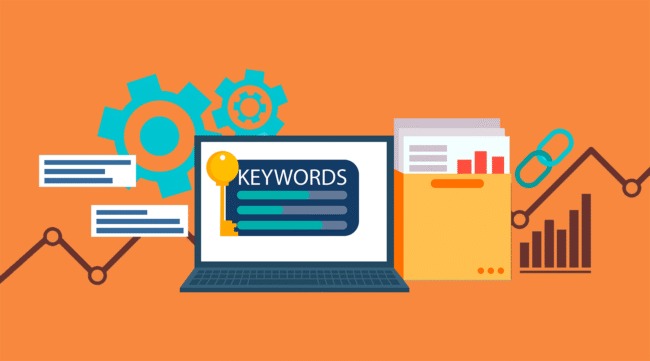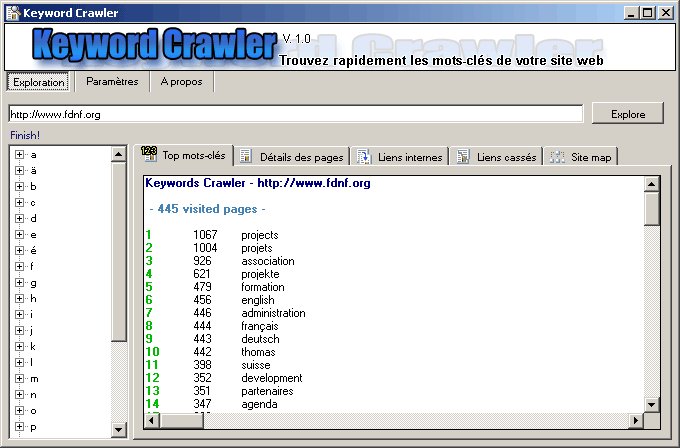In the digital marketing landscape, keywords are the critical connection between what people are searching for and the content you offer. Fin
In the digital marketing landscape, keywords are the critical connection between what people are searching for and the content you offer. Finding the right keywords can mean the difference between a successful campaign and one that disappears into the noise. Enter the keyword lists crawler—a powerful, automated tool that helps marketers and SEO experts gather keyword data from across the web.
If you’re new to the concept or looking to deepen your understanding, this guide will break down everything you need to know about keyword list crawlers, including how they work, their main use cases, and common questions.
Must visit: primedomainhub

Understanding the Basics: What is a Keyword Lists Crawler?
A keyword lists crawler is a software script or tool that crawls web pages and extracts keyword-related information. It can be used to mine content from websites, forums, blogs, or product pages to identify commonly used words and phrases, giving marketers a clear picture of what terms are trending or effective within a niche.
Think of it as a specialized spider that navigates through content-rich web pages, collects relevant textual data, and outputs a curated list of keywords based on frequency, context, or placement.
Why You Need a Keyword Lists Crawler
If you’ve ever spent hours combing through competitor blogs or scrolling through search engine results to find keyword inspiration, you’ll appreciate what a crawler can do. Here’s why they’re essential:
✔ Speed
Manually collecting keywords is time-intensive. A crawler automates the process and gives you results in minutes.
✔ Scalability
Need keywords from 100 product pages? No problem. A crawler handles massive tasks with ease.
✔ Deep Insights
By crawling top-performing content, you can identify not just obvious keywords, but also related terms, semantic variations, and long-tail phrases.
✔ Data-Driven Decisions
You get raw data that can be analyzed with SEO tools or used to train models, cluster topics, or enhance paid ad targeting.
How Keyword Lists Crawlers Work: A Technical Overview
Most keyword crawlers follow a multi-step process:
- Initialization
Start by defining a list of URLs or a search query. Some crawlers begin from a seed keyword and then navigate through the result pages. - Fetching Content
The crawler sends HTTP requests to websites and downloads their HTML content. - Parsing and Cleaning
It extracts text from relevant tags: headings (<h1>, <h2>, etc.), metadata (<title>, <meta>), and main content sections. - Keyword Extraction
Text is split into words and filtered. Algorithms remove stopwords, punctuation, and irrelevant tokens. - Keyword Aggregation
Extracted keywords are counted, grouped, or categorized. The crawler may also tag them based on frequency or where they appeared on the page. - Exporting Results
The final keyword list is exported in a structured format (CSV, Excel, JSON, or SQL database).
Real-World Applications of Keyword Crawlers
A keyword crawler isn’t just a fancy scraper—it’s a versatile tool. Here’s how professionals use it:
🔍 SEO Optimization
Scrape competitors’ pages to see what keywords they target, then optimize your own pages with similar or better terms.
🧠 Content Brainstorming
Use crawlers to pull question-based keywords from forums like Reddit or Quora for long-form content ideas.
🛒 E-commerce Keyword Harvesting
Scan product listings on platforms like Amazon or Shopify to find descriptive, purchase-intent keywords for product pages.
📈 PPC Campaign Planning
Pull high-converting keywords from ad copy or landing pages used by competitors and integrate them into your own campaigns.
Types of Keyword Data You Can Extract
A keyword lists crawler can help you collect several types of keyword-related data:
- Short-tail and Long-tail Keywords
- Topic Clusters
- LSI (Latent Semantic Indexing) Terms
- Question Keywords (e.g., “how to,” “what is”)
- Transactional Phrases (e.g., “buy,” “best price”)
- Seasonal or Trending Terms
Depending on how advanced the crawler is, it may also detect user intent and segment keywords into informational, navigational, or transactional categories.
Tools & Technologies Used
You can either use a ready-made keyword crawler tool or build one using common tech stacks:
Off-the-Shelf Tools:
- Keyword scraper browser extensions
- SEO suites with crawler modules
- Custom keyword scraping apps
DIY Stack:
- Python: BeautifulSoup, Scrapy, Requests
- Node.js: Puppeteer or Cheerio
- Storage: SQLite, Pandas (for analysis), JSON
- NLP: NLTK or spaCy for filtering and keyword extraction
Common Challenges with Keyword Crawling
Despite their usefulness, crawlers come with some caveats:
❌ Legal Restrictions
Web scraping must be done ethically. Always check for permission or refer to a site’s robots.txt.
❌ Captcha and Anti-Bot Systems
Many sites use bot detection methods. You might need rotating proxies or headless browsers to bypass them.
❌ Unstructured Data
Not all pages are formatted cleanly. Crawling unstructured or dynamic content can be tricky.
❌ Volume Management
Crawling hundreds of sites can quickly lead to data overload. You’ll need good filtering and storage practices.
Tips for Getting the Most Out of Keyword Crawlers
- Use a focused seed list: Don’t try to crawl the entire internet. Start with high-quality, niche-specific sources.
- Set crawl depth wisely: Shallow crawls are faster and often more relevant. Deep crawls may uncover more, but at a higher processing cost.
- Filter noise: Apply stopword filters, regex, and frequency thresholds to clean your results.
- Combine with analytics: Import your crawled keywords into SEO tools to analyze volume, competition, and trends.
FAQs: Keyword Lists Crawlers
Q1. Are keyword crawlers different from keyword research tools?
Yes. Keyword research tools like Google Keyword Planner provide data from existing keyword databases. Keyword crawlers collect live data directly from web content.
Q2. Can I use keyword crawlers for multilingual websites?
Yes. As long as the crawler supports UTF-8 or the encoding used on the site, it can extract keywords in multiple languages.
Q3. How often should I run a keyword crawl?
This depends on your industry. For fast-moving markets like tech or e-commerce, a weekly or bi-weekly crawl may be ideal. For static industries, monthly is usually enough.
Q4. What’s the best way to analyze crawled keywords?
Export the data to Excel or a database, then use filters and pivot tables. You can also plug it into visualization tools like Tableau or keyword clustering software.
Q5. Is it possible to crawl search engines like Google or Bing for keywords?
Technically yes, but scraping search engines violates their terms of service. A safer alternative is to use their APIs or SEO data providers.
Final Thoughts
In today’s content-driven environment, knowing what people are searching for and how they phrase their queries is a competitive advantage. A keyword lists crawler gives you the power to uncover insights that are buried deep within the digital world. Whether you’re a solo blogger, an SEO agency, or a product marketer, incorporating a crawler into your toolkit can transform your keyword research process.
It’s not just about quantity—it’s about finding quality, relevant, and actionable keywords that align with user intent. With the right crawler setup and strategy, you can turn the web into your personal keyword database.

COMMENTS